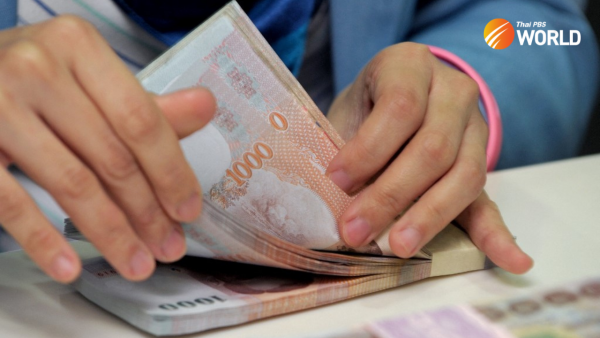How Thai economy will perform next year

Thailand’s economy is likely to increase around 2.7-3.0 percent, according to the predictions by several economic institutions.
The limited expansion is a result of negative effect from the weaker global economic performance, rising household debts and tech disruption that leads to less demand for manual workers.
The World Bank projected Thailand’s growth in 2020 at 2.9 percent against 2.7 percent this year. The Economic Intelligence Service (EIS) of the Thailand Development Research Institute (TDRI) forecasted Thailand’s 2020 growth at between 2.5-3 percent. Siam Commercial Bank Economic Intelligence Center expected Thailand’s GDP to grow 2.7 percent next year.
SCB EIC noted that due to weaker economic performance at home and aboard, the government is likely to play a more important role in boosting the economic activities through the fiscal spending and money transfer to people through a variety of assistance programs.
The Asian region sees an economic slowdown. The developing East Asian Pacific counties excluding China are expected to grow 4.9 percent on average, according to the World Bank. China’s growth is expected to slow to 5.9 percent.
The World Bank attributed the lower growth to the weaker trade and trade policy uncertainty that have weighed on investment growth due to the protracted trade tension between China and the US.
Moreover, tech disruption and high and rising debt levels in some countries have influenced the regional growth.
The World Bank recommended the government to use policy to support economic growth by improving the quality of spending and guarding fiscal sustainability. Also, sound debt management strategies should be developed to manage risk exposure from debt portfolio.
Export
Export sector, which has been an engine for Thailand’s growth, has been hit by the trade war between the US and China.
In the first 10 months this year, exports contracted by 2.4 percent year-on-year, the largest contraction in four years.
Falling exports are rice, petroleum products, chemicals, computer parts, rubber products and integrated circuits & parts. Expanding exports are fruits, toiletries & cosmetics, air-conditioners, electrical appliance parts, pick-up trucks, and food products.
TDRI reported that for the entire 2019, exports could contract by 2 percent, a little less contraction than the first 10 months, as there are more orders from trade diversion in the fourth quarter.
TDRI predicted that, next year, goods exports could grow by 1 percent from its very low base this year, trade diversion and relocation increase, as well and recovery of emerging markets.
SCB EIC forecasts that Thailand’s outbound shipment may increase only 0.2 percent in 2020, despite a sign of gradual recovery.
Baht
Thai baht continues to gain its strength. Thanks to Thailand’s high current account surplus, investors view Thai baht as a regional safe haven currency.
This year, the Thai currency has been moving in line with net capital inflows. The baht strengthened by almost 7.5 percent from December 2018 to November 2019 from Bt32.7 to Bt30.2 against a dollar.
The baht became the strongest among ASEAN-5 currencies as net capital flows into Thailand has risen the most so far this year.
SCB EIC expected the baht to move around Bt29.5-30.5 against a dollar at the end of next year.
TDRI predicts that the baht will depreciate slightly to Bt30.3 against a dollar next year as current account surplus next year will be less than this year’s.
On Thailand’s GDP, the next year’s growth will be supported by a modest expansion of exports and tourism receipts. Also, the government’s spending will speed up as the fiscal budget is carried over to next year.
Hence, new public investments will be delayed to next year as the implementation of the fiscal expenditure 2020 of Bt3.2 trillion will likely start in March 2020.
Tourism arrivals and receipts growth in 2019 are expected to increase 4 percent from that in 2018, partly from a low base last year and the rebound in Chinese tourist arrivals. Additionally, the waiver of visa-on-arrival fees for Chinese, Indian and Taiwanese tourists have also promoted holidaymakers from these countries to visit Thailand.
TDRI expects that, next year, tourism arrivals is forecasted to rise to 41.7 million from 39.9 million this year, a 4.5 percent increase.
Meanwhile, the household consumption has grown slower this year than last year, especially from the sharp deceleration in passenger car purchases in the second half of 2019.
Next year, due to consumers’ uncertainty about their income and a drop in consumer confidence, household consumption is expected to slow down further, and grow at around 3 percent.
The lower demand for manual workers has also attributed to the entry of automation. Some factories have adjusted to sapping demand by allowing fewer overtime hours and, increasingly, by laying off workers
People have grimmer view on job prospects as employment has contracted year-on-year in the second and third quarters of 2019. In particular, employment in all sectors fell in the third quarter, with the largest decline in the industrial sector by 4.4 percent year-on-year.
Overall, the employment fell 2.1 percent in the third quarter, the largest in 11 quarters.
Although those who are employed saw their wages risen by 1.4 percent year-on-year in the third quarter with the largest increases in agricultural sector, the reduction in employment creates worry and reduces consumer confidence.






